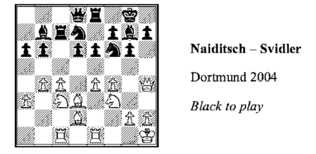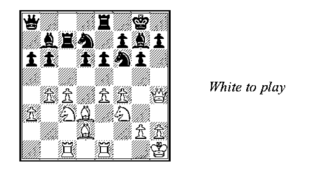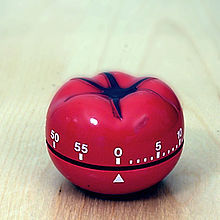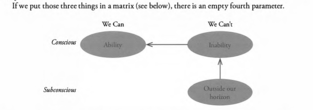Edited, memorised or added to reading queue
on 16-Sep-2018 (Sun)
Do you want BuboFlash to help you learning these things? Click here to log in or create user.
| status | not read | reprioritisations | ||
|---|---|---|---|---|
| last reprioritisation on | suggested re-reading day | |||
| started reading on | finished reading on |
| status | not read | reprioritisations | ||
|---|---|---|---|---|
| last reprioritisation on | suggested re-reading day | |||
| started reading on | finished reading on |
| status | not read | reprioritisations | ||
|---|---|---|---|---|
| last reprioritisation on | suggested re-reading day | |||
| started reading on | finished reading on |
| status | not read | reprioritisations | ||
|---|---|---|---|---|
| last reprioritisation on | suggested re-reading day | |||
| started reading on | finished reading on |
| status | not read | reprioritisations | ||
|---|---|---|---|---|
| last reprioritisation on | suggested re-reading day | |||
| started reading on | finished reading on |
| status | not read | reprioritisations | ||
|---|---|---|---|---|
| last reprioritisation on | suggested re-reading day | |||
| started reading on | finished reading on |
| status | not read | reprioritisations | ||
|---|---|---|---|---|
| last reprioritisation on | suggested re-reading day | |||
| started reading on | finished reading on |
| status | not read | reprioritisations | ||
|---|---|---|---|---|
| last reprioritisation on | suggested re-reading day | |||
| started reading on | finished reading on |
How do you read an opening book? : chess
year ago I don't spend a lot of time on opening prep, so if you are planning on devoting a lot of effort to this (which I don't recommend, but to each his own), definitely ignore this comment. <span>When I read an opening book, I first play through the main line, reading what the author has to say about the moves and skipping all the variations. If I like the resulting positions, then I might spend a little more effort learning the opening. Otherwise, I stop reading. Since you've already bought the book, presumably you like the positions. But for other openings, looking at a database before buying a book can be invaluable. Once I've decided to pursue an opening, I look at the games the author has included to try to understand more of the main ideas that pop up in all stages of the game (including the endg
| status | not read | reprioritisations | ||
|---|---|---|---|---|
| last reprioritisation on | suggested re-reading day | |||
| started reading on | finished reading on |
How do you read an opening book? : chess
look at the games the author has included to try to understand more of the main ideas that pop up in all stages of the game (including the endgame if most of the games reach similar positions). <span>Once I understand (at least some of) the ideas of the opening, then I go back and reread the main lines, this time looking at the short variations as well. These are typically tactical shots that one must be aware to avoid (or exploit), several of which may persist into the middlegame. Once I'm comfortable with the main lines, I create a PGN file with them (and eventually some key variations). There are far too many lines in an opening book to memorize them all, so w
| status | not read | reprioritisations | ||
|---|---|---|---|---|
| last reprioritisation on | suggested re-reading day | |||
| started reading on | finished reading on |
How do you read an opening book? : chess
ll, I evaluate the variations as worth knowing or otherwise. Those deemed worthwhile get added to the file, while those that I would never intend / allow to be played are immediately forgotten. <span>As an example of what I mean, if you don't play the French as black, you don't need to book up on both the advance variation and the Tarrasch -- just pick one and always play that (at least until you have time / decide it is worthwhile to learn more). The one caveat is that you should probably make an effort to be aware of transpositions between lines that could take you from a variation that you are well prepared for into one that you know nothing about. When all is said and done, excluding traps, I like my PGN file to have no more than 10-20 variations. Annotations are also generally good, as you might forget some of the ideas, and it
| status | not read | reprioritisations | ||
|---|---|---|---|---|
| last reprioritisation on | suggested re-reading day | |||
| started reading on | finished reading on |
How do you read an opening book? : chess
eas, and it would be bad to memorize a line and forget whether it is good or a trap to avoid. I also go back through the games in the book and include the relevant ones in my PGN for reference. <span>Only now does it make sense to start trying to memorize. I like to do this with by practicing with physical pieces, but there is now software to help as well. The nice thing about this approach is that when I decide to switch to a different variation (e.g., because I'm not getting great results or my tastes change), I already have a lot of th
| status | not read | reprioritisations | ||
|---|---|---|---|---|
| last reprioritisation on | suggested re-reading day | |||
| started reading on | finished reading on |
How do you read an opening book? : chess
vant ones in my PGN for reference. Only now does it make sense to start trying to memorize. I like to do this with by practicing with physical pieces, but there is now software to help as well. <span>The nice thing about this approach is that when I decide to switch to a different variation (e.g., because I'm not getting great results or my tastes change), I already have a lot of the work done, and I can go back through the opening book to look for something better with minimal effort. share Save level 1 QuickBenDelat Patzer1 point · 1 year ago Moving forward, buy books that come with a set of chessbase files. share Save Community Details r/chess 99.8k Subscribers 872
| status | not read | reprioritisations | ||
|---|---|---|---|---|
| last reprioritisation on | suggested re-reading day | |||
| started reading on | finished reading on |
| status | not read | reprioritisations | ||
|---|---|---|---|---|
| last reprioritisation on | suggested re-reading day | |||
| started reading on | finished reading on |
| status | not read | reprioritisations | ||
|---|---|---|---|---|
| last reprioritisation on | suggested re-reading day | |||
| started reading on | finished reading on |
| status | not read | reprioritisations | ||
|---|---|---|---|---|
| last reprioritisation on | suggested re-reading day | |||
| started reading on | finished reading on |
| status | not read | reprioritisations | ||
|---|---|---|---|---|
| last reprioritisation on | suggested re-reading day | |||
| started reading on | finished reading on |
| status | not read | reprioritisations | ||
|---|---|---|---|---|
| last reprioritisation on | suggested re-reading day | |||
| started reading on | finished reading on |
| status | not read | reprioritisations | ||
|---|---|---|---|---|
| last reprioritisation on | suggested re-reading day | |||
| started reading on | finished reading on |
| status | not read | reprioritisations | ||
|---|---|---|---|---|
| last reprioritisation on | suggested re-reading day | |||
| started reading on | finished reading on |
| status | not read | reprioritisations | ||
|---|---|---|---|---|
| last reprioritisation on | suggested re-reading day | |||
| started reading on | finished reading on |
Pomodoro Technique - Wikipedia
hy competition is now open! Photograph a historic site, learn more about our history, and win prizes. Pomodoro Technique From Wikipedia, the free encyclopedia Jump to navigation Jump to search <span>A Pomodoro kitchen timer, after which the method is named The Pomodoro Technique is a time management method developed by Francesco Cirillo in the late 1980s.[1] The technique uses a timer to break down work into intervals, traditionally 25 minutes in length, separated by short breaks. These intervals are named pomodoros, the plural in English of the Italian word pomodoro (tomato), after the tomato-shaped kitchen timer that Cirillo used as a university student.[2][3] The technique has been widely popularized by dozens of apps and websites providing timers and instructions. Closely related to concepts such as timeboxing and iterative and incremental
| status | not read | reprioritisations | ||
|---|---|---|---|---|
| last reprioritisation on | suggested re-reading day | |||
| started reading on | finished reading on |
Pomodoro Technique - Wikipedia
ewer than four checkmarks, take a short break (3–5 minutes), then go to step 2. After four pomodoros, take a longer break (15–30 minutes), reset your checkmark count to zero, then go to step 1. <span>The stages of planning, tracking, recording, processing and visualizing are fundamental to the technique. In the planning phase, tasks are prioritized by recording them in a "To Do Today" list. This enables users to estimate the effort tasks require. As pomodoros are completed, they are recorded, adding to a sense of accomplishment and providing raw data for subsequent self-observation and improvement.[1] For the purposes of the technique, a pomodoro is the interval of time spent working.[1] After task completion, any time remaining in the Pomodoro is devoted to overlearning. Regular bre
| status | not read | reprioritisations | ||
|---|---|---|---|---|
| last reprioritisation on | suggested re-reading day | |||
| started reading on | finished reading on |
Pomodoro Technique - Wikipedia
estimate the effort tasks require. As pomodoros are completed, they are recorded, adding to a sense of accomplishment and providing raw data for subsequent self-observation and improvement.[1] <span>For the purposes of the technique, a pomodoro is the interval of time spent working.[1] After task completion, any time remaining in the Pomodoro is devoted to overlearning. Regular breaks are taken, aiding assimilation. A short (3–5 minutes) rest separates consecutive pomodoros. Four pomodoros form a set. A longer (15–30 minute) rest is taken between sets.[1][6] A goal of the technique is to reduce the impact of internal and external interruptions on focus and flow. A pomodoro is indivisible; when interrupted during a pomodoro, either the other
| status | not read | reprioritisations | ||
|---|---|---|---|---|
| last reprioritisation on | suggested re-reading day | |||
| started reading on | finished reading on |
Pomodoro Technique - Wikipedia
. Regular breaks are taken, aiding assimilation. A short (3–5 minutes) rest separates consecutive pomodoros. Four pomodoros form a set. A longer (15–30 minute) rest is taken between sets.[1][6] <span>A goal of the technique is to reduce the impact of internal and external interruptions on focus and flow. A pomodoro is indivisible; when interrupted during a pomodoro, either the other activity must be recorded and postponed (inform – negotiate – schedule – call back) or the pomodoro must be abandoned.[1][6][7] Tools[edit] The creator and his proponents encourage a low-tech approach, using a mechanical timer, paper, and pencil. The physical act of winding the timer confirms the user's determin
| status | not read | reprioritisations | ||
|---|---|---|---|---|
| last reprioritisation on | suggested re-reading day | |||
| started reading on | finished reading on |
| status | not read | reprioritisations | ||
|---|---|---|---|---|
| last reprioritisation on | suggested re-reading day | |||
| started reading on | finished reading on |
| status | not read | reprioritisations | ||
|---|---|---|---|---|
| last reprioritisation on | suggested re-reading day | |||
| started reading on | finished reading on |
| status | not read | reprioritisations | ||
|---|---|---|---|---|
| last reprioritisation on | suggested re-reading day | |||
| started reading on | finished reading on |
| status | not read | reprioritisations | ||
|---|---|---|---|---|
| last reprioritisation on | suggested re-reading day | |||
| started reading on | finished reading on |
| status | not read | reprioritisations | ||
|---|---|---|---|---|
| last reprioritisation on | suggested re-reading day | |||
| started reading on | finished reading on |
| status | not read | reprioritisations | ||
|---|---|---|---|---|
| last reprioritisation on | suggested re-reading day | |||
| started reading on | finished reading on |
| status | not read | reprioritisations | ||
|---|---|---|---|---|
| last reprioritisation on | suggested re-reading day | |||
| started reading on | finished reading on |
| status | not read | reprioritisations | ||
|---|---|---|---|---|
| last reprioritisation on | suggested re-reading day | |||
| started reading on | finished reading on |
| status | not read | reprioritisations | ||
|---|---|---|---|---|
| last reprioritisation on | suggested re-reading day | |||
| started reading on | finished reading on |
| status | not read | reprioritisations | ||
|---|---|---|---|---|
| last reprioritisation on | suggested re-reading day | |||
| started reading on | finished reading on |
| status | not read | reprioritisations | ||
|---|---|---|---|---|
| last reprioritisation on | suggested re-reading day | |||
| started reading on | finished reading on |
| status | not read | reprioritisations | ||
|---|---|---|---|---|
| last reprioritisation on | suggested re-reading day | |||
| started reading on | finished reading on |
| status | not read | reprioritisations | ||
|---|---|---|---|---|
| last reprioritisation on | suggested re-reading day | |||
| started reading on | finished reading on |
| status | not read | reprioritisations | ||
|---|---|---|---|---|
| last reprioritisation on | suggested re-reading day | |||
| started reading on | finished reading on |
| status | not read | reprioritisations | ||
|---|---|---|---|---|
| last reprioritisation on | suggested re-reading day | |||
| started reading on | finished reading on |
Flashcard 3316065635596
| status | not learned | measured difficulty | 37% [default] | last interval [days] | |||
|---|---|---|---|---|---|---|---|
| repetition number in this series | 0 | memorised on | scheduled repetition | ||||
| scheduled repetition interval | last repetition or drill |
Unknown title
han it is, because the right side of the equation is actually a repeat of the left! Finding confidence intervals for two populations can be broken down to an easy three steps. Example question: <span>A study revealed that 65% of men surveyed supported the war in Afghanistan and 33% of women supported the war. If 100 men and 75 women were surveyed, find the 90% confidence interval for the data’s true difference in proportions. Step 1: Find the following variables from the information given in the question: n1 (population 1)=100 Phat1 (population 1, positive response): 65% or 0.65 Qhat1 (population 1, negative
han it is, because the right side of the equation is actually a repeat of the left! Finding confidence intervals for two populations can be broken down to an easy three steps. Example question: <span>A study revealed that 65% of men surveyed supported the war in Afghanistan and 33% of women supported the war. If 100 men and 75 women were surveyed, find the 90% confidence interval for the data’s true difference in proportions. Step 1: Find the following variables from the information given in the question: n1 (population 1)=100 Phat1 (population 1, positive response): 65% or 0.65 Qhat1 (population 1, negative
Flashcard 3316101287180
| status | not learned | measured difficulty | 37% [default] | last interval [days] | |||
|---|---|---|---|---|---|---|---|
| repetition number in this series | 0 | memorised on | scheduled repetition | ||||
| scheduled repetition interval | last repetition or drill |
Flashcard 3316105219340
| status | not learned | measured difficulty | 37% [default] | last interval [days] | |||
|---|---|---|---|---|---|---|---|
| repetition number in this series | 0 | memorised on | scheduled repetition | ||||
| scheduled repetition interval | last repetition or drill |



